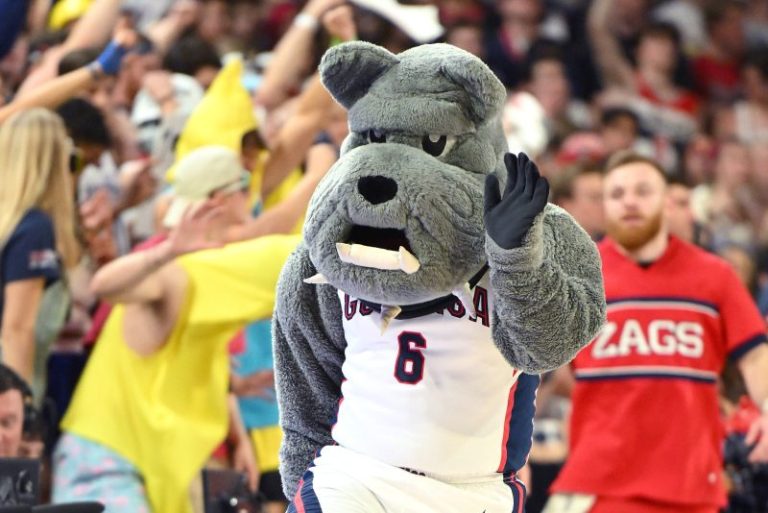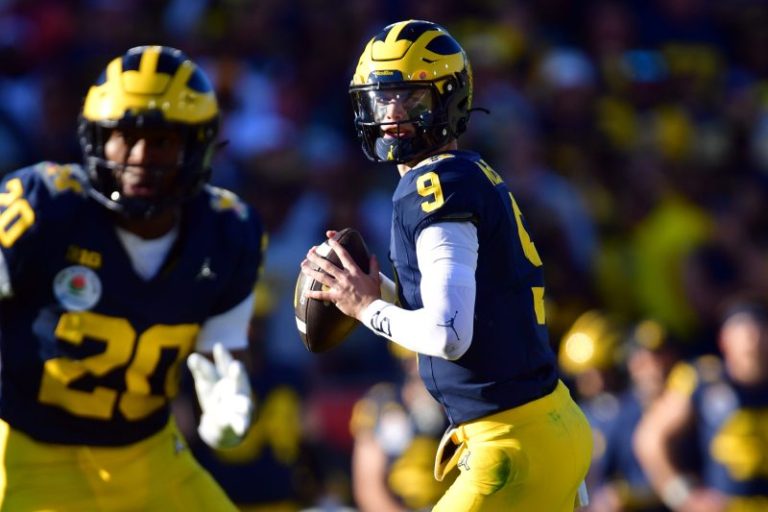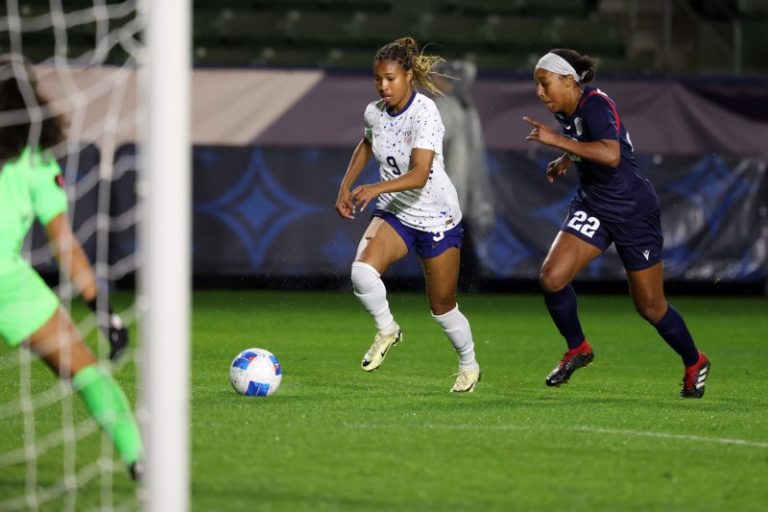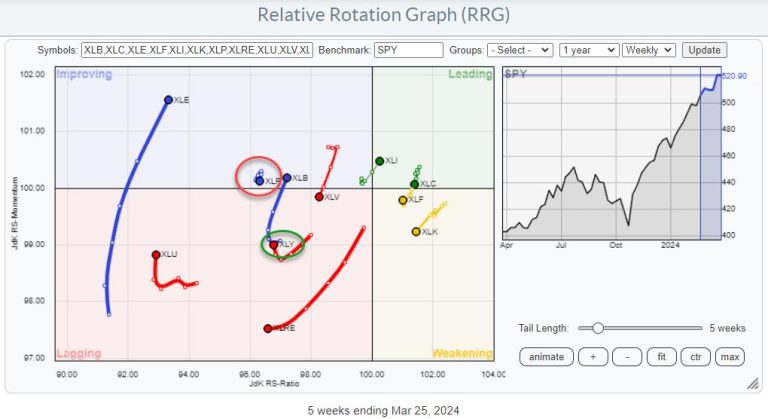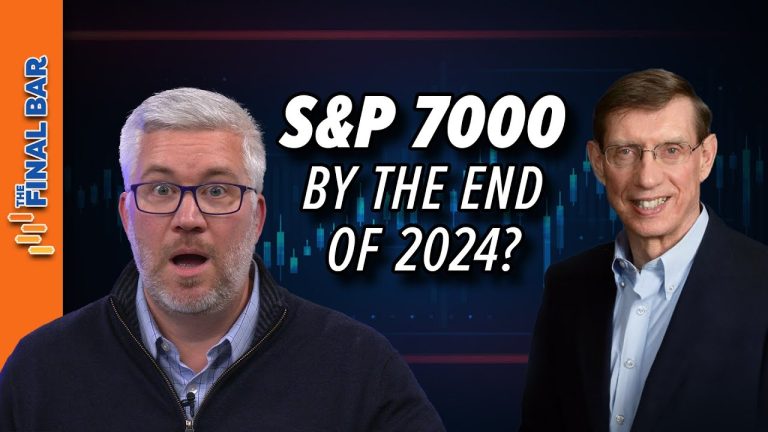With less than a month left until the 2024 NFL draft, not even the top of the order seems fully set.
In swinging a trade with the Houston Texans two weeks ago for an extra first-round pick, the Minnesota Vikings seemingly positioned themselves for another potential deal to move up the draft board to grab Kirk Cousins’ long-term replacement at quarterback. Vikings general manager Kwesi Adofo-Mensah, however, said the move was driven by adding ‘flexibility’ to the team’s draft plan. But even in the event that Minnesota doesn’t try to swing a deal to move up, another quarterback-needy team could try to secure the No. 4 pick from the Arizona Cardinals to grab a passer, which would mark the first time in history that four signal-callers were taken with the first four selections in any class.
With that in mind, here’s our latest 2024 NFL mock draft, which features a projected trade in the top five picks:
1. Chicago Bears (from Carolina Panthers) – Caleb Williams, QB, USC
Both Matt Eberflus and Ryan Poles were on hand for Williams’ pro day, and the quarterback is set to visit the Bears next week. While those parts of the pre-draft process are not formalities, they might as well be in this instance. There’s no point in entertaining a scenario in which Williams doesn’t go No. 1 to Chicago at this point, as it would seemingly take a downright stunner for something different to happen. This might be the only point of consensus we’ll have in the coming weeks.
NFL STATS CENTRAL: The latest NFL scores, schedules, odds, stats and more.
2. Washington Commanders – Jayden Daniels, QB, LSU
The certainty that surrounds the first overall pick doesn’t extend to No. 2, at least right now. And while new Commanders coach Dan Quinn said it’s ‘fair to envision’ his team will select a quarterback in the draft, general manager Adam Peters said ‘we’re far from our answer,’ noting that there was still work to be done in evaluating the top passers. Despite all that, there’s plenty that makes sense about the potential fit between Daniels and Washington, even if there would be a steep learning curve for the Heisman Trophy winner as he goes from one of the most favorable offensive setups in college football to one of the least auspicious ones in the NFL.
3. New England Patriots – Drake Maye, QB, North Carolina
Whatever the motivation was behind his comments, new Patriots coach Jerod Mayo had no problem talking up Maye at the NFL’s league meetings this week, saying ‘there really is no ceiling with a guy like that.’ But Mayo also suggested that the 6-4, 223-pound passer’s ‘floor’ might be lower than what his peers offer given his relative shortage of experience. Still, in this scenario, the answer is clear for New England: Take Maye and institute a setup in which he doesn’t have to play the world-beater role that he often defaulted to at North Carolina, typically to his own detriment.
4. Minnesota Vikings (proposed trade from Arizona Cardinals) – J.J. McCarthy, QB, Michigan
A bold move for both sides in this potential trade, to be sure. For Arizona, there’s risk in dropping too far back – perhaps out of range of the elite receivers in this class. Minnesota, meanwhile, would be mortgaging its future for a shot at perhaps its fourth choice at quarterback. Yet after picking up that extra first-rounder in the trade with the Texans, the Vikings might be positioning themselves to do just that. While McCarthy is proving to be quite the polarizing prospect in draft circles, landing in a spot where he could be mentored by Kevin O’Connell and sling the ball to Justin Jefferson might be the best-case scenario for his development.
5. Los Angeles Chargers – Marvin Harrison Jr., WR, Ohio State
Could a Michigan man really launch his Los Angeles tenure by taking the ex-Buckeye great? A mad scramble for passers no doubt would benefit Jim Harbaugh, who must find reinforcements for a receiving corps that looks to be one of the league’s iffiest after the Bolts sent off Mike Williams and Keenan Allen. And while Malik Nabers and Rome Odunze should be in the conversation, landing a transformational target like Harrison is the kind of possibility Harbaugh could only have dreamed of just a few weeks ago.
6. New York Giants – Malik Nabers, WR, LSU
As far as X-factors for quarterbacks go, the Giants are a fascinating possibility. Hedging their bet on Daniel Jones by securing either McCarthy or Maye, should either be within reach, must be a strong consideration. Obtaining one of those signal-callers, however, might necessitate a trade, which could be difficult for the retooling franchise to stomach. There should be no problem with taking Nabers and calling it a day, as New York’s offense would finally have the go-to target it has long lacked.
7. Tennessee Titans – Joe Alt, OT, Notre Dame
In a relatively restrained opening to NFL free agency, Ran Carthon stood out by making a splash on several fronts – most notably signing wide receiver Calvin Ridley to a four-year, $92 million contract before swinging a trade with the Kansas City Chiefs for cornerback L’Jarius Sneed. The most glaring missing piece from the offseason plan is a left tackle to fill in for Andre Dillard, who was cut after one disappointing season. Alt looks like just the right kind of player to slot next to 2023 first-round pick Peter Skoronski as a crucial bodyguard for Will Levis.
8. Atlanta Falcons – Dallas Turner, OLB, Alabama
This has widely been projected to be the Falcons’ pick ever since the draft order was set. Will conventional wisdom hold, or could this be a spot for a surprise? For now, there’s no point in overthinking it. An electric edge rusher is the easy pick for a unit that can’t reliably pester opposing quarterbacks.
9. Bears – Rome Odunze, WR, Washington
As Chicago’s brain trust looks to set up its new signal-caller for immediate success, bringing aboard Keenan Allen stands out as a savvy move for a franchise flush with cap space. Yet it shouldn’t prohibit the addition of another top-tier receiver like Odunze. With his knack for hauling in contested catches and threatening defenses with his full route tree, he would form a sizzling connection with Williams.
10. New York Jets – Brock Bowers, TE, Georgia
Gang Green took care of its most pressing offseason task by overhauling the offensive line, emerging with new bookends in Tyron Smith and Morgan Moses, as well as offensive guard John Simpson. There’s still work to be done in the receiving corps, however, even after the addition of Mike Williams. Bowers’ extensive résumé as a run-after-catch threat indicates he could be an immediate asset to Aaron Rodgers as an underneath target while Williams and Garrett Wilson work deeper downfield.
11. Cardinals (proposed trade from Vikings) – Brian Thomas Jr., WR, LSU
This might seem early for a pass catcher who typically has been viewed as in the next tier down from the top three players at his position. But 6-3, 209-pound targets who average 17.3 yards per catch and have 4.33-second speed in the 40-yard dash don’t tend to hang around long. If he hones his routes and demonstrates he can beat press coverage more reliably, Thomas figures to be the kind of dynamic threat this offense desperately needs, especially after losing Marquise Brown in free agency.
12. Denver Broncos – Bo Nix, QB, Oregon
Sean Payton left the door open for a possible trade up the draft board to target a top quarterback, but pulling off such a maneuver could be too costly for the Broncos to bear. With no second-round pick following the deal with the Saints to land Payton last year, Denver might have to take its shot at a signal-caller in this slot. With his extensive experience and accuracy both inside and outside of structure, Nix could be a solid fit for what Payton is looking for.
13. Las Vegas Raiders – Taliese Fuaga, OT, Oregon State
Las Vegas looks to be firmly in the mix to take a quarterback on one of the first two days of the draft, though coach Antonio Pierce said second-year passer Aidan O’Connell has earned the right to compete for the starting role. With the top five signal-callers already accounted for here, however, there’s no need to force the issue. Grabbing Fuaga to hold down the right side of the offensive line would make for a measured start to Tom Telesco’s tenure.
14. New Orleans Saints – Olumuyiwa Fashanu, OT, Penn State
Installing a 21-year-old to serve as Derek Carr’s blindside protector might seem to run counter to the Saints’ win-now philosophy, but turning back to Trevor Penning looks untenable – and right tackle Ryan Ramczyk’s career could be in jeopardy due to a knee issue. There might be some early rough patches with Fashanu as he learns how to harness his impressive physical tools and deploy a consistent technique, but the upside is worth the investment here.
15. Indianapolis Colts – Quinyon Mitchell, CB, Toledo
Winning an expensive bid for L’Jarius Sneed never seemed like a reasonable outcome for the Colts and ever-cautious general manager Chris Ballard. To address the shaky secondary, however, Indianapolis can import a dynamic playmaker in Mitchell, whose athletic traits and demeanor are custom-fit for a top-flight NFL cornerback.
16. Seattle Seahawks – Troy Fautanu, OT/G, Washington
After firming up their commitment to Geno Smith as their starting quarterback, the Seahawks can further support their signal-caller by affording him some sorely needed help on the interior. New offensive coordinator Ryan Grubb is plenty familiar with Fautanu from their time together at Washington, though the former left tackle’s appeal as a fleet-footed guard should be readily apparent to any coach.
17. Jacksonville Jaguars – Terrion Arnold, CB, Alabama
Doug Pederson acknowledged Monday that Jacksonville is back in the role of ‘hunter’ in the AFC South after fumbling the division crown down the stretch. In order to better slow down C.J. Stroud and the Texans in the years to come, the Jaguars would be wise to take a long look at Arnold, a sticky asset for man coverage who should help new defensive coordinator Ryan Nielsen deploy the aggressive tactics he’s hoping to unleash in Year 1.
18. Cincinnati Bengals – JC Latham, OT, Alabama
Massive offensive tackles are always welcome in Cincinnati, which added the 6-8, 370-pound Trent Brown to step in at right tackle opposite Orlando Brown Jr., who measures 6-8 and 345 pounds. The former, however, looks like a short-term solution, while the 6-6, 342-pound Latham could be a fixture for the franchise.
19. Los Angeles Rams – Jared Verse, DE, Florida State
No point in trying to replace the retired Aaron Donald in a one-for-one fashion, as recreating the three-time Defensive Player of the Year’s singular presence is impossible. The Rams, however, will have to bolster their pass rush in the aggregate. Verse seems like a smart starting point, as his relentless approach would help Matthew Stafford and Co. maximize the franchise’s current competitive window.
20. Pittsburgh Steelers – Jackson Powers-Johnson, C, Oregon
Even after blowing up its outlook behind center, Mike Tomlin’s crew still has lingering offensive question marks on offense, particularly at wide receiver and offensive tackle. But center also stands out as a problem area, and Powers-Johnson gives off plenty of Steelers vibes with his punishing approach.
21. Miami Dolphins – Graham Barton, G/C, Duke
The cap-strapped Dolphins surely steeled themselves for the loss of Robert Hunt to the Panthers, but there’s nevertheless a sizable hole on Miami’s offensive front. A steady and savvy left tackle at Duke, Barton has widely been projected to move inside at the next level. He should make for a quick study in Mike McDaniel’s scheme as a likely Day 1 starter at guard.
22. Philadelphia Eagles – Cooper DeJean, CB, Iowa
Bringing back Chauncey Gardner-Johnson was a fine first step to help an aging secondary that needs to be reinvigorated. With DeJean, Philadelphia would have another versatile defensive piece who could handle some crucial coverage assignments early before eventually taking over as a full-time starter on the outside.
23. Cardinals (proposed trade from Cleveland Browns via Houston Texans and Vikings) – Byron Murphy II, DT, Texas
Improving a lackluster interior pass rush typically comes at great cost, whether that’s in the draft or free agency. Luckily for Jonathan Gannon and Co., the most disruptive force at the position is available for the taking with the second first-rounder from the hypothetical Vikings trade. Gannon said at the combine he was looking for ‘game wreckers,’ and Murphy has demonstrated he certainly qualifies as just that.
24. Dallas Cowboys – Tyler Guyton, OT, Oklahoma
Mike McCarthy said Tuesday that Dallas intends to keep Tyler Smith at left guard, signaling that the Cowboys’ preference for reconfiguring their offensive line would be to look elsewhere for Tyron Smith’s replacement at left tackle. A former H-back, Guyton could entice Jerry Jones with his rare movement ability and 6-8, 322-pound frame, even though he’d be somewhat of a project for a team in need of immediate assistance up front.
25. Green Bay Packers – Jordan Morgan, OT, Arizona
At 6-5 and 311 pounds, Morgan doesn’t offer the same hulking presence that some of the other second-tier offensive tackle prospects in this class do. For Green Bay, however, he might make for a fine successor to David Bakhtiari at left tackle, or he could slide in as a promising prospect at guard.
26. Tampa Bay Buccaneers – Laiatu Latu, DE/OLB, UCLA
In moving aggressively to re-sign Baker Mayfield and Mike Evans and apply the franchise tag to Antoine Winfield Jr., the Buccaneers made clear they have no intention of taking a step back after they surprised many with their third consecutive NFC South crown. As the most polished and steady pass rusher in this class, Latu can help the team win now by stepping in opposite YaYa Diaby to give Tampa Bay a promising pair of young players on the edge.
27. Cardinals (from Texans) – Nate Wiggins, CB, Clemson
Not a bad way to round out a trio of first-rounders. Woefully undermanned on the back end, Arizona no doubt would stand to benefit from adding Wiggins, a hyperathletic coverage presence with the frame (6-1, 173 pounds) and speed (4.26 seconds in the 40-yard dash) to stick with any receiver – so long as he bulks up.
28. Buffalo Bills – Adonai Mitchell, WR, Texas
Amid some painful farewells made necessary by a tough cap situation, Buffalo did well to replace Gabe Davis with the more cost-effective Curtis Samuel. Yet given the importance of ramping up the explosiveness around Josh Allen – and possibly preparing for a post-Stefon Diggs future at some point soon – the dynamic Mitchell would be an attractive option if he makes it this far.
29. Detroit Lions – Kool-Aid McKinstry, CB, Alabama
Though the secondary briefly looked stable, cornerback Cam Sutton’s release following an alleged domestic violence incident sparked further uncertainty for Detroit’s defense. With his even-keeled approach, McKinstry makes for a fine plug-and-play cornerback for a group itching to take the next step as an NFC contender.
30. Baltimore Ravens – Amarius Mims, OT, Georgia
The offseason defections were to be expected, but Baltimore was still left with a number of holes and limited resources for patching them. If the Ravens were able to secure the massive Mims (6-8, 340 pounds), it would have an answer at right tackle after the trade of Morgan Moses − and potentially a contingency plan at left tackle if Ronnie Stanley can’t shake his injury woes.
31. San Francisco 49ers – Chop Robinson, DE, Penn State
With enviable athleticism an explosive first step, Robinson is the kind of edge rusher whom coaches can’t wait to bring along. Pairing him with highly regarded 49ers defensive line coach Kris Kocurek could yield a massive payoff for both the player and team.
32. Kansas City Chiefs – Ladd McConkey, WR, Georgia
A left tackle to safeguard Patrick Mahomes seems like the top priority, but the run on blockers significantly depleted the potential options here. Instead, Mahomes gets one more weapon after the Marquise Brown signing, with McConkey figuring to see plenty of early action as an intermediate target who can shake coverage quickly and keep the offense moving.
This post appeared first on USA TODAY

